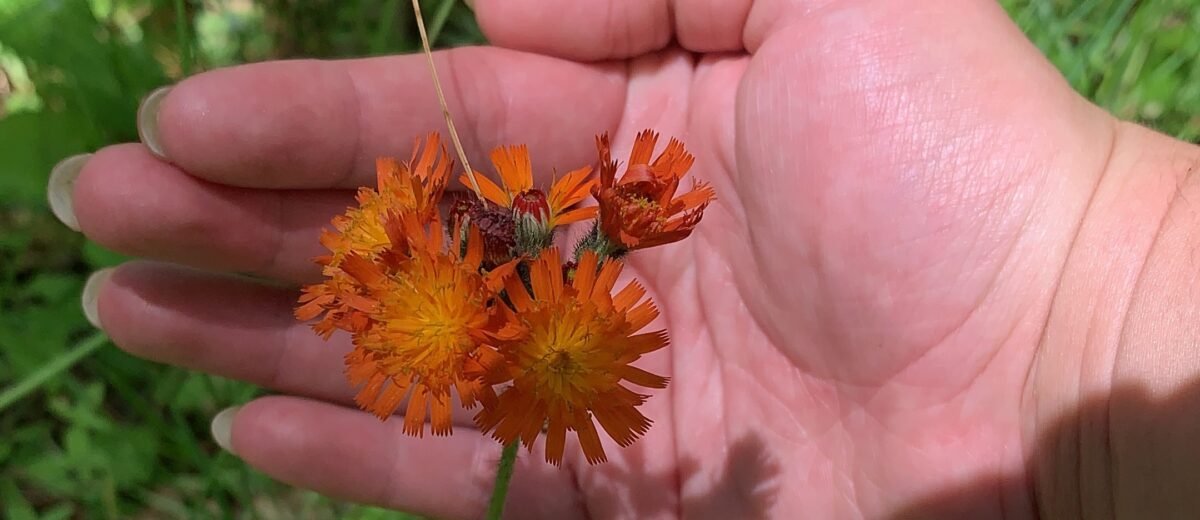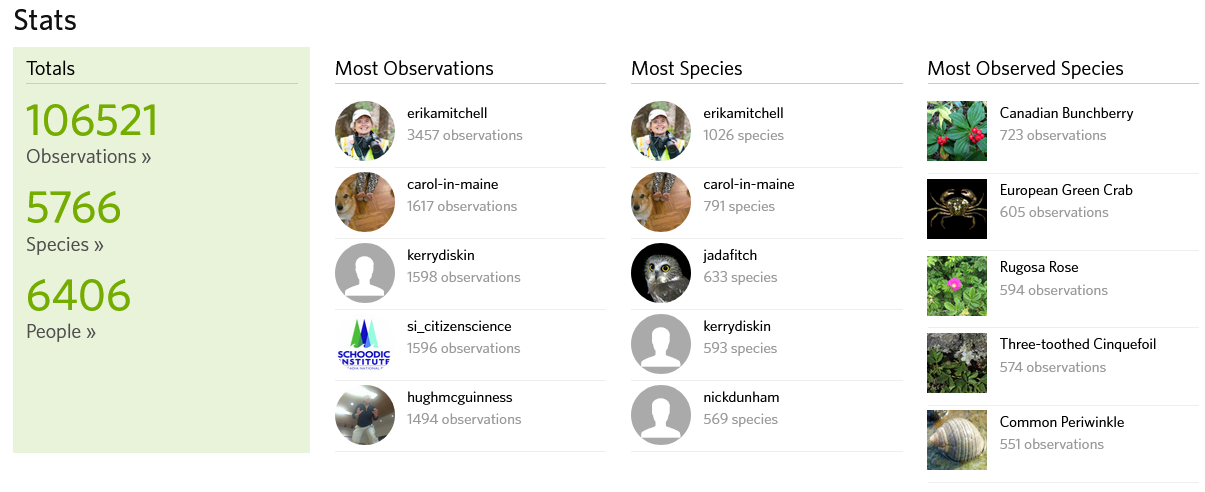by Seth Benz
At Schoodic Institute, we believe that science is for everyone, and that everyone can contribute to science. And the last five years have really shown this to be true!
In August 2016, we began using the citizen science platform iNaturalist, with the guidance of Carrie Seltzer, Stakeholder Engagement Strategist for iNaturalist at California Academy of Sciences. This marked a shift away from comprehensive yet intensive collection-based events, toward less invasive bioblitzes and dispersed observations.
The result has been an increase in documented plants, animals, fungi, and algae by a much larger community of people.
For example, eight years of collection-based bioblitzes with 460 participants yielded 1,605 species of insects in the Schoodic District of Acadia National Park.
Since 2016, 6,394 people have contributed to iNaturalist more than 100,000 observations of 5,760 species, including more than 2,000 insects across the Downeast and Acadia region.
Observations are contributed by individuals on their own, by Schoodic Institute scientists and Earthwatch volunteers conducting research, and by participants at events such as the guided bioblitzes at Sieur de Monts in Acadia National Park in partnership with Friends of Acadia.
Anyone can post an observation to iNaturalist at any time, and then scientists and researchers in Acadia and across the world can access the information.
We also offer guided events.
In 2021 we hosted 13 bioblitz events at Sieur de Monts and the Great Meadow Wetland. Over 122 hours, 76 participants made 1,472 observations of 335 species–contributing more than half of the total observations for this part of the park.
The iNaturalist database provides a deep well of information that can be used by scientists here in Acadia as well as all over the world. Observations reveal commonly encountered species, such as the Canadian bunchberry, Cornus canadensis, which has the most observations to date. Students and citizen scientists are helping to track the spread of harmful introduced species such as the European green crab, Carcinas maenas, as well as documenting occurrences of threatened and endangered species like mountain firmoss and the red knot (Calidris canutus). We can also compare iNaturalist data to Acadia’s extensive historical record of observations to understand how biodiversity has changed since before the park was established in 1916.
iNaturalist is a proven resource for providing meaningful data for scientists, park resource managers, and engaging the public in documenting the diversity of life in parks and beyond. It has great potential to look deeper than the charismatic flora and fauna level to provide a broader perspective of diversity, including organisms such as insects, spiders, mosses, lichens, mollusks, and seaweeds. Establishing such a broader scientific baseline opens potential to discover future indicators of large-scale environmental change.

